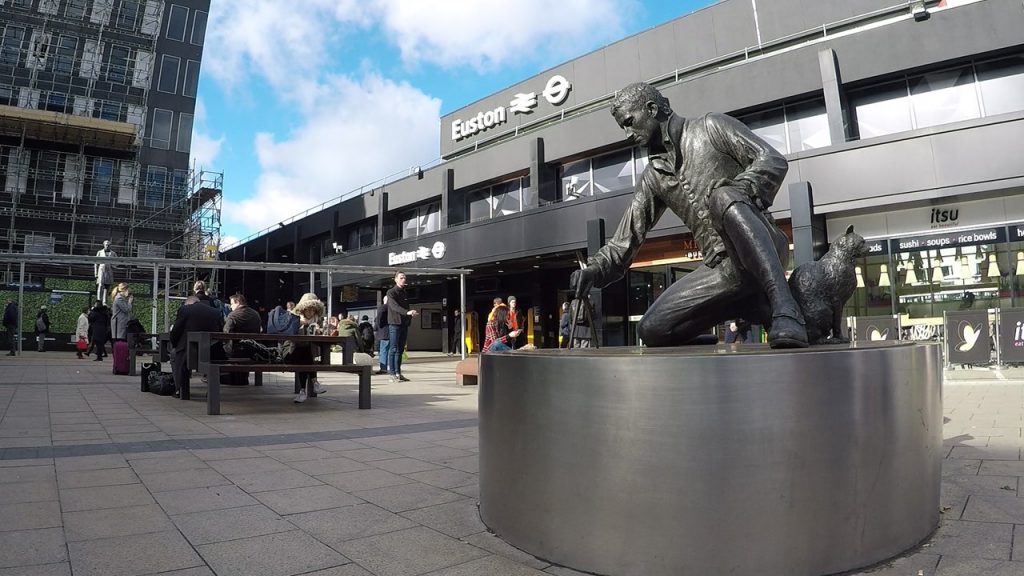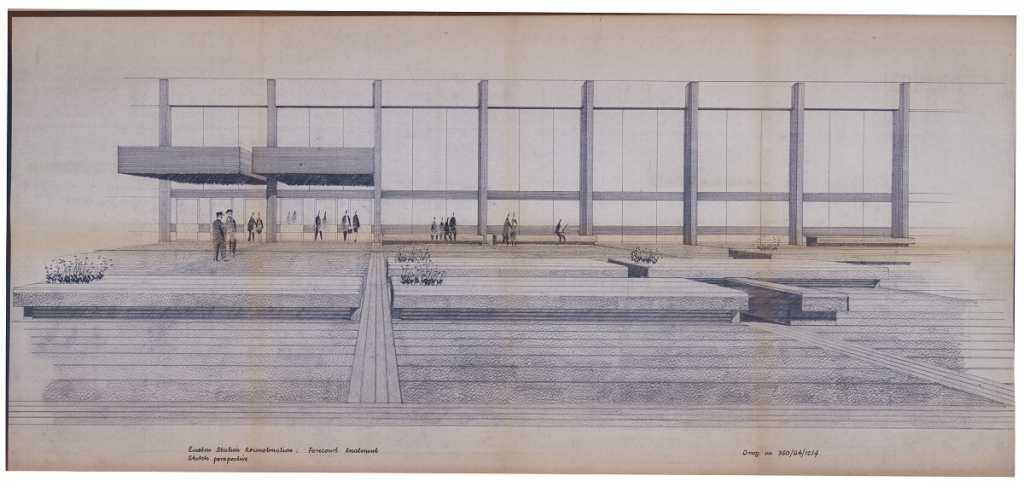On this day in 1837,London Eustonstation opened – heralding inter-city rail travel for the capital.
The Euston we see today is radically different to its original incarnation – it was completely rebuilt in conjunction with the electrification of the West Coast Main Line in the 1960s.
Here are five things you didn't know about Britain's sixth-busiest railway stations:
Building permission wasn’t for Euston at all!
The engineers of the line,GeorgeandRobert Stephenson, had always planned their London terminus for Euston Square but objections from landowners forced them to relocate it to Chalk Farm to get the bill passed.
With permission secured, George Stephenson stepped back from the project and his son Robert took charge as chief engineer.
By 1835 he had authorisation to build his terminus at Euston Square as originally planned, and a simple train shed was built with two platforms, one for arrivals and one for departures with tracks between to store carriages.

Its name can be traced to the Domesday Book
Euston was named after the family seat of the Dukes of Grafton, Euston Hall in Norfolk. Euston village was recorded in the Domesday Book in 1087.
Green and pleasant land
The site of Euston station was still farmland at the time of its proposal in 1833.
Passenger demand rapidly outgrew the original station

Euston became overcrowded by the early 1840s as lines from the Midlands and the North East used the station as their entrance to London.
The station began its first major expansion in 1846 and after the formation of the London & North Western Railway in the same year, the building work included the headquarters for the new company, which also formed the entrance to the station. Known as the ‘Great Hall’, it sat between the Doric Arch and the station platforms.
By the 1870s, passenger and parcel traffic had once more outgrown the capacity of the station. Two new platforms, additional service roads and an additional entrance were created.
到了1890年代,终点站被放大一次more, with four more platforms being created, bringing the total to 15; 14 for passengers and one for parcels.
Network Rail is committed to preserving Euston’s remaining history
For example, the铁路遗产信托– funded by Network Rail – helped restore the lodges outside Euston station, which the public can enjoy today as a pair of craft beer pubs –Euston Tap. They’re run by craft beer wholesaler Pivovar.
Read the history of London Euston by clicking on the cross below:
- 1807: Richard Trevithick’s pioneering demonstration of his “Catch Me Who Can” steam locomotive took place near the site of Euston Station.
- 1830: George and Robert Stephenson were appointed engineers to the London & Birmingham Railway.
- 1832: the first bill to build a railway between London & Birmingham with a terminus at Euston Square was rejected by the House of Lords.
- 1833: a second bill was accepted after the site of the terminus was relocated to Chalk Farm.
- 1835: authorisation was obtained by the London & Birmingham Railway to build its terminus at Euston Square, the original planned site.
- 1837: 20 July, Euston station opened along with the line as far a Boxmoor.
- 1838: May, Philip Hardwick’s ‘Doric Arch’ completed.
- 1846:尤斯通站的扩展工作开始于1849年。伦敦和北西北铁路公司成立,伦敦和伯明翰,大交界处,利物浦和曼彻斯特和曼彻斯特和伯明翰铁路的融合。
- 1847: the goods locomotive roundhouse and goods yard is developed on the site of the London & Birmingham’s planned station at Chalk Farm. The roundhouse is now the Roundhouse Theatre.
- 1849: May, The Great Hall opens as a new HQ for the LNWR and entrance to the station.
- 1869: further enlargement of Euston takes place with two lodges built on Euston Road with carved stones advertising LNWR destinations.
- 1870: platforms at Euston are extended.
- 1874: the name ‘Euston’ is carved into the Doric Arch.
- 1890s: further expansion brought the total platforms at Euston to 15.
- 1921: the LNWR war memorial, designed by Reginald Wynn was completed. Additional plaques commemorating those railway men and women who lost their lives in the Second World War were added later.
- 1923: railway grouping means Euston Station is taken on by the newly formed London Midland and Scottish Railway.
- 1938: LMS unveils plans for rebuilding Euston, which were abandoned at the start of the second world war.
- 1950s: BR (London Midland Region) decided to rebuild Euston as part of the electrification of the main line. The new station is designed by British Rail’s regional architect, R. L. Moorcroft and team.
- 1961: Taylor Woodrow are awarded the contract to build the new station. Euston’s Doric Arch and Great Hall are demolished.
- 1968: the new Euston station is opened by Queen Elizabeth II.
- 1979: three new office blocks, designed by Richard Seiffert, open in the plaza in front of the station.
- 2009: Euston plaza is refurbished by Network Rail.
Read more:
Preserving railway history: five things saved by Network Rail
Incredible Stephenson railway history rediscovered
WWII bomb-damaged signal box celebrates 120 years

